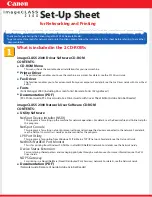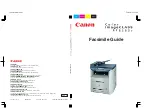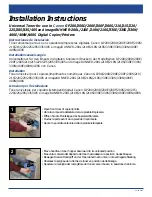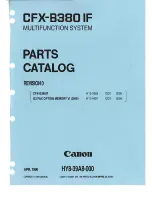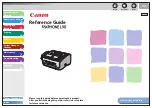
10 ALIGNMENT
Device is provided with sensors for the use of alignment notch in order to handle roll of tickets with pre-printed
fi
elds
and a
fi
xed length.
The alignment sensors assembled on printer, are “re
fl
ection” sensors: this kind of sensor emits a band of light and
detects the quantity of light re
fl
ected to it.
The presence of the notch is therefore detected by the amount of light that returns to the sensor, considering that the
light is re
fl
ected by the white paper and absorbed by the black mark.
The following paragraphs show how to correctly set the con
fi
guration parameters of device in order to assure the
alignment.
10.1 Enable alignment
To guarantee the alignment, it is necessary to enable the parameter “Notch Alignment” during the Setup procedure
(see chapter 5).
10.2 Calibration
The sensor calibration occurs automatically and consists in adjusting the quantity of light emitted to match the degree
of whiteness of the paper used and the degree of black of the mark printed on paper.
The device automatically performs the self-calibration during the Setup procedure only if the “Notch Alignment” pa-
rameter is set to “Enabled” value (see chapter 5).
When self-calibration starts, the device performs some paper feeds and then it prints the calibration result and the
value (numeric and as a percentage) of the
“Threshold White”
parameter that indicates the power-up level of the sen-
sor emitting side (the value ranges from 0V to 5V):
Autosetting Notch : OK
Threshold White : 2,3V [70%]
The “Autosetting Notch” parameter indicates the result of the self-calibration procedure; OK will appear if it has been
successful, NOT OK will appear if the procedure has failed.
After the printing of the procedure result, the device offers the execution of the function of paper characterization
“Characterize Paper” and the change of the “Notch Threshold” parameter which represents the detection threshold
of the notch.
Choosing the “Yes” value for the “Characterize Paper” parameter, the device prints a graphic representation (see fol-
lowing
fi
gures) of the outgoing voltage of the alignment sensor (expressed as a percentage) and the “Notch Threshold”
value.
This graphic representation is useful to set the most suitable value to assign to the “Notch Threshold” parameter and
then to better identify the optimal threshold value which takes into account the variations of the signal and the small
oscillations around zero.
10. ALIGNMENT
User Manual
VKP80II-EE 69
Содержание VKP80II-EE
Страница 1: ...OEM Commands manual 77200000001600 VKP80II EE VKP80II EE USER MANUAL ...
Страница 2: ......
Страница 4: ......
Страница 8: ...1 INTRODUCTION 8 VKP80II EE User Manual ...
Страница 16: ...2 DESCRIPTION 16 VKP80II EE User Manual ...
Страница 28: ...4 OPERATION 28 VKP80II EE User Manual ...
Страница 46: ...6 MAINTENANCE 46 VKP80II EE User Manual ...
Страница 60: ...7 SPECIFICATIONS 60 VKP80II EE User Manual ...
Страница 62: ...8 CONSUMABLES 62 VKP80II EE User Manual ...
Страница 74: ...10 ALIGNMENT 74 VKP80II EE User Manual ...
Страница 76: ...11 TECHINCAL SERVICE 76 VKP80II EE User Manual ...
Страница 81: ...12 ADVANCED FUNCTIONS User Manual VKP80II EE 81 ...
Страница 82: ...12 ADVANCED FUNCTIONS 82 VKP80II EE User Manual ...
Страница 83: ......
































